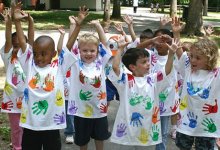Culturally Responsive Teaching
Find and share resources and explore strategies to engage students by connecting to and honoring their cultures, experiences, and backgrounds.
Using Canva to Support English Learners
This popular design tool can be used to have students engage in activities that amplify creativity and provide linguistic support.8.5kYour content has been saved!
Go to My Saved Content.Making Space for Native Languages in Newcomer Classrooms
When English language learners are given consistent opportunities to practice their home languages in class, their English proficiency flourishes—along with their sense of belonging and identity.22 Diverse Book Choices for All Grade Levels
Suggestions from teachers who are working to offer students at every grade level book choices that represent their lives.475.9kYour content has been saved!
Go to My Saved Content.Getting Started With Culturally Responsive Teaching
Understanding students’ lives can help teachers foster a sense of belonging and ensure that all students feel respected and challenged.371kYour content has been saved!
Go to My Saved Content.A Look at Implicit Bias and Microaggressions
A primer on the impact of implicit biases in schools and how they can be expressed by students and faculty.367kYour content has been saved!
Go to My Saved Content.A Guide to Equity and Antiracism for Educators
Teachers shaken by recent events and wondering how to work for change in our society and schools can start with these lesson plans, videos, and other resources.239.2kYour content has been saved!
Go to My Saved Content.Supporting Multilingual Students in the Early Grades
Five ways teachers can celebrate and extend the linguistic expertise of young students who speak two or more languages.209.7kYour content has been saved!
Go to My Saved Content.Teaching Black History in Culturally Responsive Ways
Black history is American history and should be taught throughout the year across the curriculum—not confined to a single month.217.4kYour content has been saved!
Go to My Saved Content.Preparing for Cultural Diversity: Resources for Teachers
How can teachers prepare for diverse classrooms? There isn't a definitive answer, but there is a wealth of resources online. Discover some helpful links for teachers.335.2kYour content has been saved!
Go to My Saved Content.How Does Poverty Influence Learning?
Poverty-related factors that intervene in students' ability to learn include health and well-being, limited literacy and language development, access to material resources, and level of mobility.255.6kYour content has been saved!
Go to My Saved Content.Building Relationships With Empathy Maps
Use this simple visual tool to make better instructional decisions with your students' strengths and needs in mind.98.2kYour content has been saved!
Go to My Saved Content.A Classroom Where Everyone Feels Welcome
Six strategies for building the strong relationships with students that are the heart of a culturally inclusive classroom community.Equity vs. Equality: 6 Steps Toward Equity
Ideas include knowing every child, celebrating their potential, recognizing their challenges, acknowledging inequity, and using culture as a resource.218.9kYour content has been saved!
Go to My Saved Content.Creating a Culturally Responsive Early Childhood Classroom
Ensuring that all students see their culture reflected in the curriculum and classroom materials is crucial.99.4kYour content has been saved!
Go to My Saved Content.Why Teachers of Color Matter for Students of Color to Succeed
Research shows that having a teacher of color can help students of color reach better outcomes; but the benefits extend to all young people, preparing them to live and work in an increasingly diverse society.107.5kYour content has been saved!
Go to My Saved Content.













